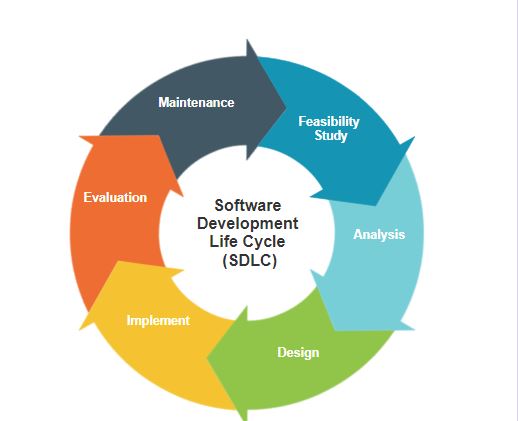Key Drivers & Software Development Life Cycles
| What are the key drivers? |
|---|
|
Reasons why an organisation wants a new system or an update to a current system. Projects or objectives are encouraged by different factors these are known as the key drivers. Some examples are: • Location • Customer Satisfaction • Employee Engagement/Crunch • Profitability |
| List at least five reasons why an organisation might initiate a systems analysis activity |
|---|
|
• Current system is out of date and no longer does it job effectively • Technology might have moved on and new things have become possible that the older systems can no longer do. • A competitor has developed a brand new system or process and the organisation needs to do something similar in order to offer the same service to customers. • New business. • Changes in business objectives and system requirements. • New technologies. • Systems no longer supported. • Bug fixes. • Changes in local, national and international legislation. |
| For each of the key drivers, explain what they are and how they may benefit an organisation. |
|---|
|
Location: Location is where your business is located. when running a business it's important to think about foot traffic; does your business stand out?, Is it easy to access?, How high is the foot traffic? These are all the things you need to think about because after all you will get more business when your in the city centre than on a farm. Customer Satisfacton: If your business is known to exploit or give bad services to your customers and your company's reputation will be diminished. It is best to give a constant prominent experience to your customers to keep them coming back and possibly recommending you to people. Employee Engagement/Crunch: Putting employees under continuous stress will become unmotivated to do their work leaving the overall quality lower. Also under crunch employees may become exhausted which will decrease the quality. One final thing that can affect employees engagement is outdated tech, a laggy or slow computer will slow down the speed of production losing profits. Profitability: Will the product create a reasonable profit? Is there a demand for this product? Are you the only ones or one in a few to sell this product? Again these are all things to think about. Why waste time on something that may not even work out? or create a decent turnover? Improve the product to turn it into something unique. |
| What SDLC stand for and what is its purpose? |
|---|
|
It stands for Software Development Life Cycle. The development of software is very complex and can take years. The purpose of the SDLC is to break the making of software down into manageable stages that • Produces a piece of software that meets the users need • Is produced within budget • Is finished on time. |
| Identify and list all the steps in the software development life cycle (SDLC) (support your understanding with an appropriate diagram) |
|---|

Explain what happens in the feasibility stage of the SDLC Technical - does the technology do what we want to do? Economical - does it make financial sense? Will we save money in the long run? Legal - are there any copyright/licencing issues? Operational - Will people be able to use it? Schedule - can it be made in time? |
| Explain what happens in the analysis stage of the SDLC |
|---|
|
What will the software need to do? • Use interviews/ questionnaires/ observe/ people/ find existing documentation. • Draw diagrams that identify processes and show how data will flow around the system. Will involve diagrams such as information flow diagrams, flow charts and data flow diagrams. • The end product is the specification and user requirements(Explains what the software should do. |
| Explain what happens in the design stage of the SDLC. |
|---|
|
The software design will include: • A detailed data dictionary that defines any data in the systems. • Input screens/user interface • Output screens and reports • How the data will be processed: main algorithms as flowcharts and pseudocode. • How the will be tested: typically a formal test plan will be drawn up at the design stage to make sure the software is tested objectively. |
| Explain what happens in the implementation stage of the SDLC |
|---|
|
Implementation includes the following activities: • coding and testing the software writing documentation: technical documentation, for whoever has to support and maintain software later, a user guide. • Installing software for the user (if this software is written for a particular customer, as opposed to commercial off-the-shelf software). |
| Explain what happens in the evaluation stage of the SDLC |
|---|
|
Does it do what it is supposed to do? The software must be evaluated against the original specification/User Requirement document. This is also called apprentice testing. If everything works out the developer can get paid! |
| Explain what happens in the maintenance stage of the SDLC |
|---|
|
Corrective maintenance - fix any bugs that come up Adaptive maintenance - when the software needs to change to meet new requirements. Perfective maintenance - the user might request performance improvement or changes to how it looks to make it easier to use. |